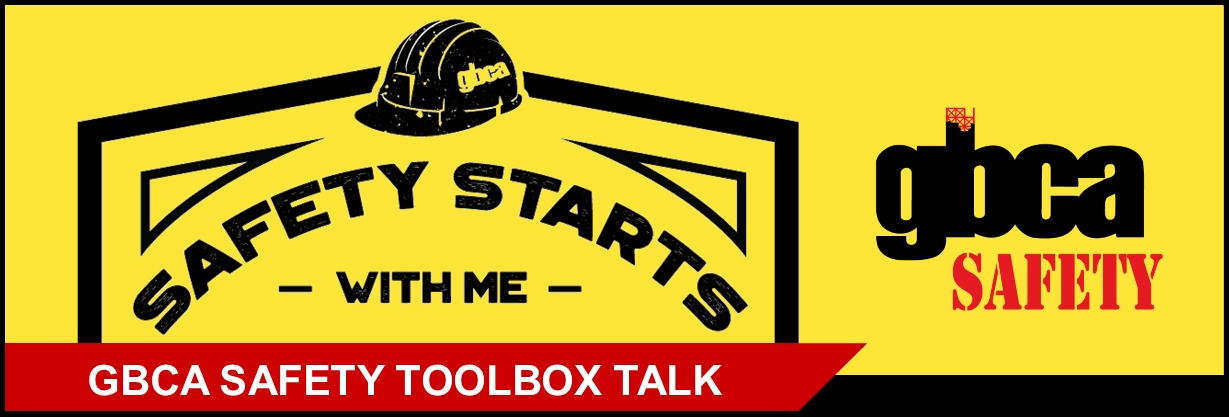This GBCA Safety Toolbox Talk provides information on how to protect yourself and others from poor air quality.
What is Air Quality Index?
The Air Quality Index (AQI) is a system used to monitor and inform the public about the potential harm of air pollution in their area. This information is accessible through news outlets, radio, television, and various websites. By staying informed about the AQI, we can take proactive steps to protect ourselves, children, and others from unhealthy levels of air pollution. While small children, older adults, and individuals with pre-existing conditions such as asthma, diabetes, cardiovascular diseases, or those who are pregnant are particularly vulnerable, poor air quality can affect everyone.
Know the Numbers and Colors.
The following is a chart we often use to determine the number of particles in the air, and the degree of effects on your health, along with the colors used to associate with each level. 
How We Can Protect Ourselves:
To safeguard yourself and others from poor air quality, consider the following steps:
- Check the Air Quality Forecast: Regularly monitor air quality reports in your area to stay informed about unhealthy pollution levels.
- Limit Outdoor Activities: Avoid engaging in outdoor activities when air quality is poor.
- Be Aware of Environmental Hazards: Understand that wildfires, smoke, extreme heat, humidity, cold, and storms can impact air quality.
- Keep Windows Closed: Maintain indoor air quality by keeping windows shut when pollution levels are high.
- Monitor Your Health: Pay attention to symptoms such as coughing, wheezing, chest discomfort, shortness of breath, and unusual fatigue, and take appropriate actions if they occur.
Responsibilities as Contractors
As contractors, it is crucial to ensure the safety and well-being of employees, especially during periods of poor air quality. Here are some steps to consider:
- Educate Employees: Inform employees about the risks of poor air quality and encourage those at risk to monitor their health.
- Adjust Work Schedules: When possible, schedule indoor tasks to minimize exposure to outdoor air pollution.
- Monitor Employees: Keep an eye on workers for any signs of respiratory distress and take appropriate measures.
- Provide Safe Break Areas: Ensure employees have access to enclosed areas for breaks and meals.
- Use Fans: Employ fans to improve air circulation on job sites.
- Stay Informed: Continuously monitor air quality levels throughout the workday and adjust activities as needed.
By being proactive and informed, we can create a safer and healthier work environment for everyone.
Remember to record the attendees of your toolbox talk!
Access GBCA’s full library of toolbox talks:





